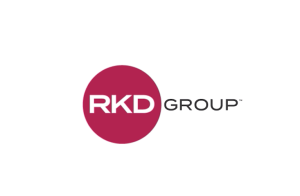Questions that have been and are soon to be asked by year:
1985: What’s your fax number?
1995: Are you web friendly?
2000: Is your site printer friendly?
2010: Is your site mobile friendly?
2018: Are you 3D friendly?
2020: Is your organization printer friendly?
Five years is a long time in technology, especially when factoring in Moore’s Law — where processing power doubles every two years — which makes it 7.5 human years or 52.5 dog years.
Looking out toward 2020 in the world of 3D printing, price is the key indicator that will dictate consumer behavior and then push the need for the nonprofit sector to respond. The current price of a home 3D printer ranges from $500 to $2,600. As this price drops toward the tipping point of home adoption, be prepared for this question: Is your organization printer friendly?
Whether you are on the funding or implementation side, the upside and practical applications of affordable 3D printing will be disrupting your field. Here are some examples when looking down the road.
Education working in the classroom. 3D printers will become the new “projector” for schools. Lesson plans will need to include printable materials. If you are talking about an ancient skull, you better have a 3D printout. Our favorite example: This Radio Lab story (www.radiolab.org/story/taung-child/) about the Taung child with a printable skull (www.thingiverse.com/thing:332463).
Dinosaur bones previously only available through a museum trip will become a click away and will be made more powerful when connected with great curricula that nonprofits are creating.
Cause Awareness. If you are creating awareness around a specific disease, people will expect to be able to print the virus or bacteria to help understand the root cause of the illness.
Environmental organizations should have their supporters print endangered species to gain a greater understanding of the issue.
Support in Developing Countries. 3D printing will help solve the “last mile problem” by being able to bring consistent resources to remote regions with a simple print. This is an untapped potential for organizations coordinating with field initiatives ranging from education to building water wells. Can the wells you are building in underdeveloped countries be fixed with printable parts?
Environment
There are efforts underway to convert recycled materials into reusable printer filament. This work could revolutionize recycling, closing the cycle time between collection and commercial reuse. Even crazier is that the 3D printer can make a filament recycling tool (www.thingiverse.com/thing:12948).
Advanced 3D and 4D Printing
We were just warming up to the concept of 3D printing and suddenly we’re already at 4D? New 4D printing refers to self-assembling 3D printed objects and was somewhat jokingly coined by Skylar Tibbets from the Massachussetts Institute of Technology (MIT).
Similar to the way Xerox copier/scanner/fax machines had a huge impact on business despite never making it into the home, so will advanced 3D and 4D printing. The limiting factor behind the promise of advanced printing is the specialty “ink” or unique raw printing materials needed to create the product.
Major institutions such as universities, hospitals, and industrial companies will have access to this ink and be able to execute on the work created by others. In the same way that open source code has been furthered by the community and leveraged widely, so too will the shared development behind advanced 3D/4D printing. Even though consumers and organizations aren’t doing the actual printing, they will still be able to inform and fund the innovation.
Mindblowing uses of 3D/4D printing that are coming:
• Human tissue printing
This is the end of the waiting list for kidneys. The printing of human tissue (www.ted.com/talks/anthony_atala_printing_a_human_kidney) opens up worlds of medical possibilities and will shift the focus away from donor registry building.
• Nano printing
Printing at the nano scale will enable innovation across manufacturing fields, technology and have practical medical uses. The creation of nano biofilters and even nanobots will enable easier engineering to occur at the nano scale — should be a fantastic voyage.
• Self-assembling 4D printing
Self-assembling printing involves 3D printers that create smart objects that can assemble themselves through kinetic energy. This may not free people from the Sunday Ikea projects, but it definitely makes folks at MIT excited.
• Printing food
This is just gross. Though it excites NASA with the possibility of printing food in space and easily storing and processing food for long voyages.
• ‘Smart’ material printing
Since the Roman aqueducts, our plumbing technology has predominantly relied on gravity to move water. Water pipes made from smart material have the potential to create a rhythm that moves liquid through them.
Convinced yet? No one likes to be the first penguin in the water, but being the last one surely means starvation. At this point it is not a question of if, but when the technology will hit mass adoption during the next five years. The real question that remains is who will be pushing the purpose behind the printing – which is why the nonprofit sector will need to become printer friendly by 2020. NPT
George Weiner is chief whaler at online communication, technology and fundraising firm Whole Whale in New York City. Tweet: @WholeWhale








